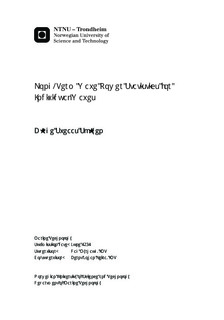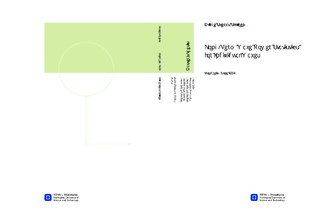| dc.description.abstract | Long-term statistics for wave power describes the waves that will occur over years and their energy. This can be found by putting together short-term statistics for individual waves and statistics from sea states. All the calculations are done both by the use of wave scatter diagrams and analytical expressions. It is generally seen that the two different methods gives similar results.For the long-term statistics the quality of the results is dependent on both the resolution of the calculations, and the size of which the calculations span over. Most of the waves have low values for wave energy, wave height and wave period. It is seen that the wave power varies with the square of the wave height which is expected. The long-term marginal pdf of wave power is very steep and resembles an exponential curve, but it is not an exact match. The CDF of wave energy is also very steep, and here the differences between the two methods become visible.To optimize the motion of a WEC in waves a control system is necessary. The goal of the control system is to change the WEC's parameters so that it increases the motion of the moving parts. The key control variable, the machinery force, can be divided in three categories: resistive loading, reactive loading and non-linear loading. Different concepts that uses reactive loading is approximate complex conjugate control, tracking of approximate optimal velocity and model predictive control. These give the highest power output, but they use some energy in order to control the motion. These methods use prediction because the machinery force is dependent on future values. Resistive loading, i.e. no machinery force, is presented by phase control by latching and clutching. Latching is a method keeping the absorber fixed during parts of the cycle, and clutching is a method which is coupling and decoupling the machinery at intervals. These methods give smaller energy output, but do not use energy in order to control the phase.A good wave energy converter is a device that has low cost of electricity per kilowatt hour. This criterion is dependent on the cost of the device, which is generally not known, and the power absorption that can be estimated. The power absorption has been estimated for four different concepts: a heaving buoy, a heaving two bodies system, a pitching device and a floating OWC. The power absorption varies for different sea states and is generally increasing as the total present wave power increases, but the WEC's have different optimal values that give the best power absorption and best efficiency. The efficiency can for some areas be very large, even larger than 100% mainly because of focusing techniques and limited accuracy on the raw data used in the calculations. However most of the efficiency results are much lower than that. The efficiency of the WEC's is combined with the long-term wave power statistics to obtain long-term power absorption. The differences between the concepts are large, as they have efficiency between 11% and 47%. | nb_NO |

